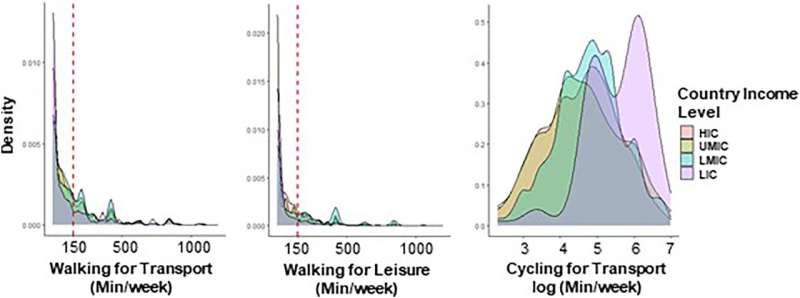This article has been reviewed according to Science X's editorial process and policies. Editors have highlighted the following attributes while ensuring the content's credibility:
fact-checked
trusted source
proofread
Global study identifies neighborhood characteristics that promote walking and cycling

How people perceive their own neighborhoods may have a lot to do with whether they choose to walk and cycle, according to a global study of nearly 40,000 adults.
Simon Fraser University health sciences professor Scott Lear says those who are most likely to walk more than 150 minutes a week for commuting or leisure purposes reported their neighborhoods had more desirable features. The likelihood of cycling and walking was associated with land use mix-diversity (amenities such as stores or parks within a 20-minute walk), street connectivity (number of three and four-way intersections) and safety from crime.
"Cycling and walking are two excellent ways to weave exercise into daily life and meet those fitness goals outlined in many New Year's resolutions," says Lear, who was part of an international team whose research, published in Cities, spanned 21 countries. "We sought to understand how factors in the built environment can either promote or discourage a person from engaging in these forms of physical activity."
Study participants were between the ages of 35-70 living in more than 350 urban communities from low, middle and high-income countries as classified by the World Bank.
"Levels of physical inactivity are rising globally and in high income countries such as Canada, over 70 percent of adults are physically inactive," says Lear. "One in four adults do not meet the globally recommended activity level of at least 150 minutes per week of moderate-intensity aerobic physical activity and this trend has negative consequences for our health."
Four high income countries were studied—Canada, Saudi Arabia, Sweden, and the United Arab Emirates—while four low-income countries included Bangladesh, Pakistan, Tanzania, and Zimbabwe. There were also five lower-middle-income countries—China, Colombia, Iran, Palestine, Kyrgyzstan—and eight upper middle-income countries: Argentina, Brazil, Chile, Kazakhstan, Malaysia, Russia, South Africa, and Turkey.
The team observed a greater likelihood of cycling with high levels of land use mix and aesthetics.
Researchers suggest that future studies should further examine local contextual factors that may modify how the built environment is associated with walking and cycling behaviors.
More information: Kwadwo Boakye et al, Perceived built environment characteristics associated with walking and cycling across 355 communities in 21 countries, Cities (2022). DOI: 10.1016/j.cities.2022.104102





















